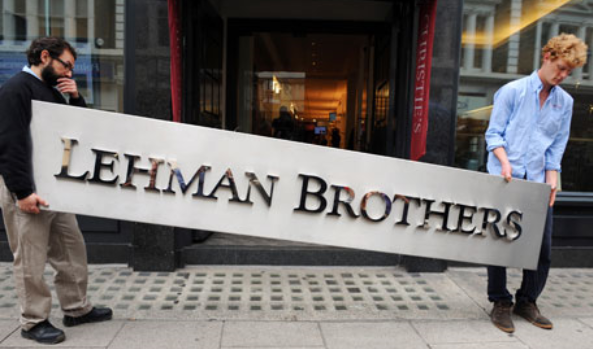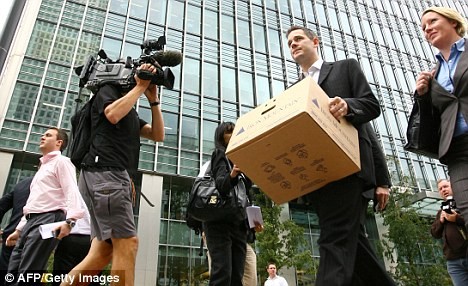Lehman Brothers Collapse Six Years Later Seven Lessons for Investors
Post on: 2 Апрель, 2015 No Comment

Bitter Pill: Why Medical Bills Are Killing Us
Six years later, the nations financial system seems to have largely healed. Banks are back to posting record profits. Over the past several years, financial stocks have been among the hottest areas of the market.
And with the housing market recovering, even the dreaded mortgage-backed security the type of bond that triggered the financial panic in the first place starting in 2007 are back in fashion .
But even if it seems like its business as usual on Wall Street, for Main Street investors key lessons endure. Here are 7 of them.
Lesson #1: The price you pay for stocks matters. Really.
The medias narrative is that the stock market plummeted into an historic bear market because of the global financial panic. That may be true, but equities may not have fallen that far and for that long if the circumstances werent ripe for a correction.
Remember that in October 2007, the price/earnings ratio for the stock market based on 10 years of average profits rose above 25, marking one of only a handful of times that market valuations rose so high. Not surprisingly, the stock market went on to lose 57% of its value from October 9, 2007, through March 9, 2009. (As an aside, the stock markets so-called normalized P/E ratio is back above 25 again today.)
By March 2009, the P/E ratio for the S&P 500 had sunk to an historically low 13 (the historic average is closer to 16), which has been a signal of buying opportunities. Had you invested at that moment listening to the Warren Buffett rule that says be greedy when others are fearful and fearful when others are greedy you would have enjoyed total returns of 230% ever since.
Lesson #2: Dont bank on any one group of stocks even financials.
The turmoil after Lehmans collapse was different and more frightening than the bursting of the Internet bubble in 2000. Why? This time the stocks that took the biggest hits werent shares of profitless startups that no one had ever heard of. In this crisis, the biggest losers were financial titans some more than a century old that produced a third of the markets profits and dividends. No wonder these blue chips were fixtures in many retirement portfolios.
The love affair is clearly over or is it? Financials have been among the markets best performers since September 2011, having doubled in value in three short years. As a result, bank stocks, which made up less than 9% of the S&P 500 in 2009, based on total stock market value, now represent more than 16% of the broad market. That means theyre probably among the biggest holdings in your stock mutual funds and ETFs.
Lesson #3: Buy and hold works eventually.
When the Dow fell to 6547 on March 9, 2009, stocks had already lost more than half their value. And equities wouldnt fully recover until 2013. So it may seem that investors who pulled $25 billion out of stock funds in March and $240 billion over the next three years plowing that money into bonds were on the right track.
They werent. March 2009 marked the start of a bull market that saw stocks return 230% so far. Had you simply hung on to a basic 70% equity/30% bond strategy from Sept. 1, 2008, when things started to get scary, youd have earned nearly the 9% historical annual return for this mix over five-year stretches since 1926. Of course, youd have earned that only by staying the course.
Lesson #4: There is no such thing as a conservative or stable stock.
In past crashes, pundits always pointed out that the safe place to be is among giant, blue chip stocks that pay dividends and that are industry leaders. Well, Lehman Brothers, Citigroup, Merrill Lynch, and AIG all fell under those descriptions. Yet all of those stocks plunged more than the broad market.
This taught investors a huge lesson: Treat all stocks as the volatile, unpredictable creatures that they are. Even dividends, which are synonymous with financially stable, conservatively run companies, cant be trusted, because during the crisis, the financial sector began slashing dividend payments to safeguard their finances.
Lesson #5: Reaching for yield can lead to a fall.
When stocks fall, the stability of cash can cushion the blow. Yet things dont necessarily work out that way.
Just ask shareholders of Schwab YieldPlus. This so-called ultrashort bond fund which was marketed as a cash alternative, though it really wasnt one fell 35% in 2008 when the mortgage securities that provided the plus in the funds name turned out to be riskier than thought. (In January 2011 Schwab settled the charges that it misled investors but did not admit wrongdoing.)
Before that, there was the Reserve Fund, the first money fund in 14 years to lose value in part because it tried to boost payouts by holding some Lehman debt.

It makes no sense to take risks with your rainy-day savings, a lesson thats worth remembering today. Since early 2009, investors have poured billions of dollars into floating-rate bond funds, which buy short bank loans that offer higher payouts than basic cash, as well as ultrashort bond funds.
Lesson #6: Diversification works but in diverse ways.
In 2008, only one type of diversification seemed to pan out: your basic mix of stocks and bonds. Among equities, everything pretty much fell in lockstep.
Fast-forward more than three years, when the financial crisis unfolded in a different guise this time with the debt crisis in Europe. Fear of government defaults peaked in early 2012, with rates on Greek debt reaching 29%. Diversification worked here, too, but also in a different guise.
While conventional wisdom said investors should flee the continent, European shares wound up beating the world in 2012, returning 20.3%. The year before that, it was U.S. stocks that performed the best (despite Uncle Sams fiscal woes). And in 2013, Japan led the way, despite having experienced another recession.
Spreading your bets globally eventually pays off, especially given how mercurial equities can be. For investors who are hearing that the U.S. looks like the only promising market these days, this is a clear lesson to heed.
Lesson #7: Stocks always recover; people dont.
The Dow closes at an all-time high, but thats cold comfort to those who retired in the past five years. Big upfront losses can crack a nest egg, even if the market later improves. Thats because your portfolio has the most potential earning power in the first few years after you get the gold watch.
Historically, investors have been able to tap anywhere from 4% all the way up to 10% of their savings annually based on how markets fared in this all-important first decade of retirement.
Over the next 10 years, return expectations are extremely modest, so even a 4% withdrawal rate may seem optimistic. For boomers nearing retirement, the trick is not to make matters worse, as two out of five older workers did in 2008 by keeping 70% or more of their 401(k)s in equities.
Its time to dial down the risks in your portfolio before the next downturn.














